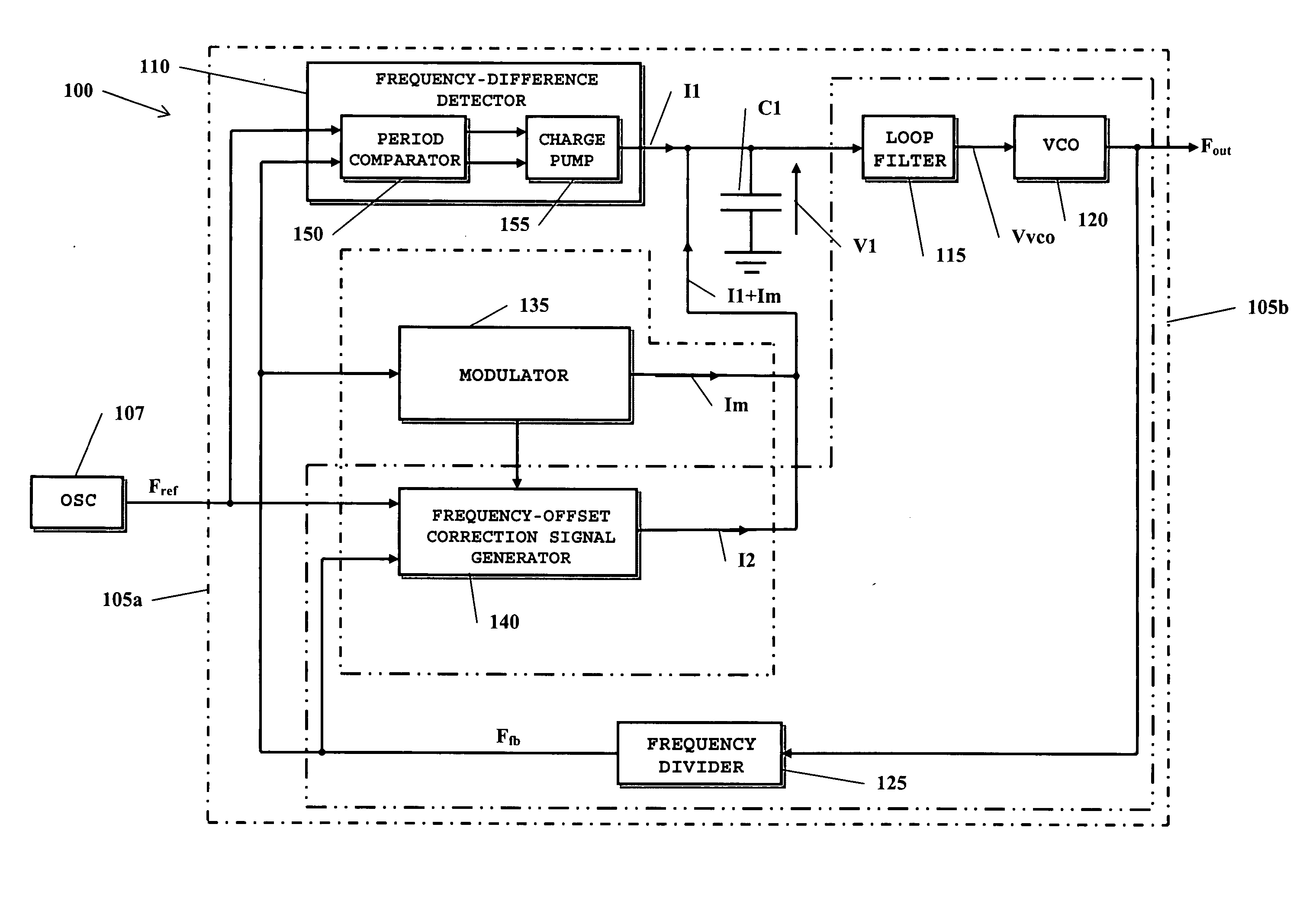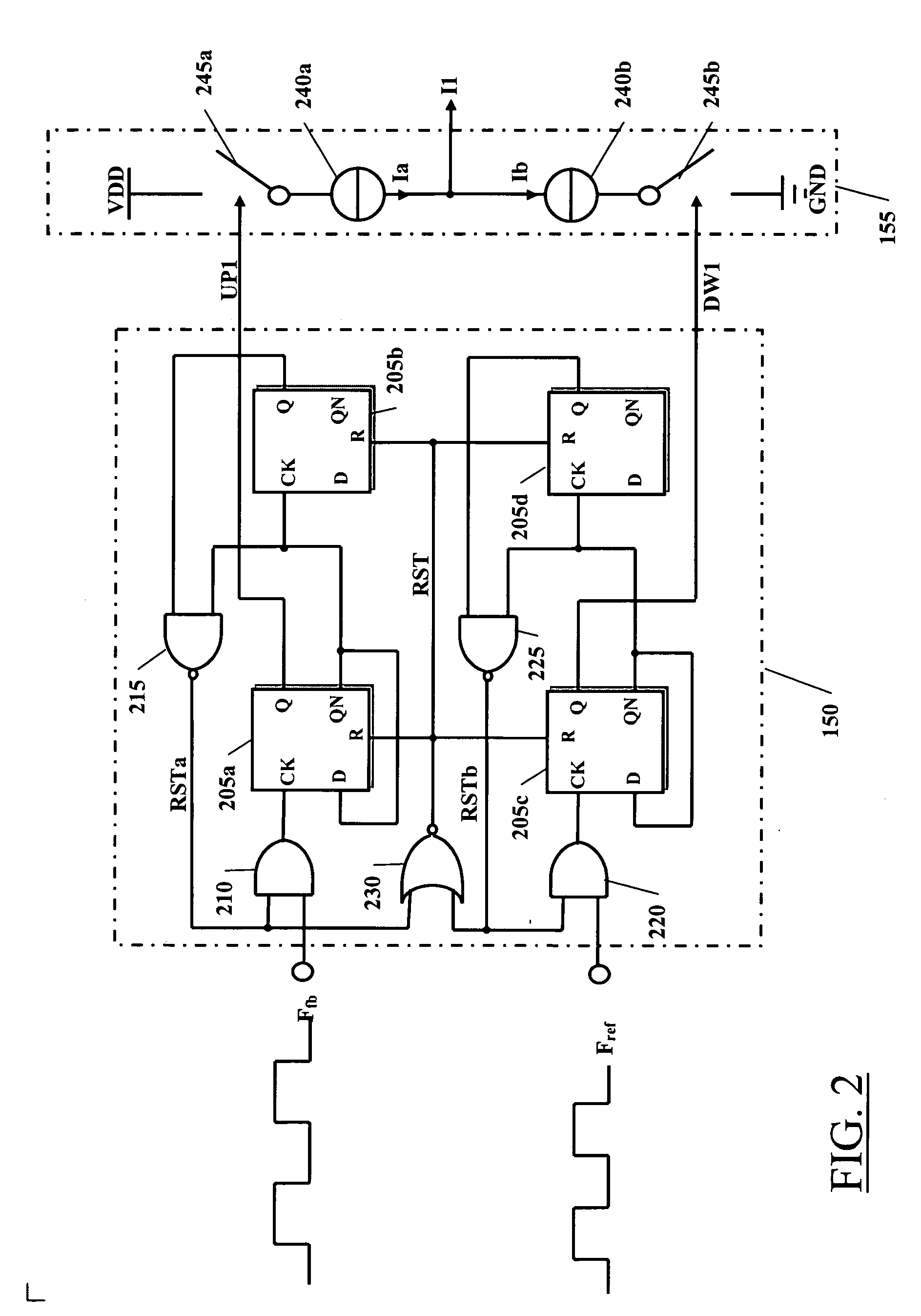Spread-spectrum clock signal generator
a clock signal and spread-spectrum technology, applied in the direction of pulse automatic control, angle modulation details, demodulation, etc., can solve the problems of reducing as far as possible the level of electromagnetic emissions, undetectable electromagnetic emissions of electronic equipment and appliances, and even harmful to the human body, so as to achieve low electromagnetic emissions
- Summary
- Abstract
- Description
- Claims
- Application Information
AI Technical Summary
Benefits of technology
Problems solved by technology
Method used
Image
Examples
Embodiment Construction
With reference to the drawings, FIG. 1 schematically shows a spread-spectrum clock signal generator according to an embodiment of the present invention, globally indicated as 100.
The clock signal generator 100 comprises a first circuit loop 105a, in the drawing circumscribed by dash-and-dot lines. The first circuit loop 105a includes a frequency-difference detector 110 that receives a reference signal Fref, oscillating at a prescribed frequency Fref (in the following, the reference frequency), and a feedback signal Ffb. The reference signal Fref is for example generated by a local oscillator 107, e.g. a crystal oscillator. The frequency-difference detector 110 is sensitive to the frequency difference between the reference signal Fref and the feedback signal Ffb, and generates a signal I1, particularly a current signal, which, on average, has a value proportional to the frequency difference between the reference signal Fref and the feedback signal Ffb. A frequency-difference detec...
PUM
 Login to View More
Login to View More Abstract
Description
Claims
Application Information
 Login to View More
Login to View More - R&D
- Intellectual Property
- Life Sciences
- Materials
- Tech Scout
- Unparalleled Data Quality
- Higher Quality Content
- 60% Fewer Hallucinations
Browse by: Latest US Patents, China's latest patents, Technical Efficacy Thesaurus, Application Domain, Technology Topic, Popular Technical Reports.
© 2025 PatSnap. All rights reserved.Legal|Privacy policy|Modern Slavery Act Transparency Statement|Sitemap|About US| Contact US: help@patsnap.com



